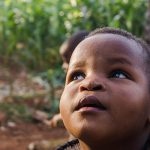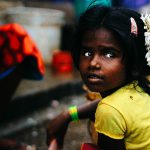There are many negative effects of homelessness in communities of nations. This issue should be urgent and requires national interests, community advocates, international attention but most importantly access to safe, affordable housing to maintain living stability. There are many communities outside the U.S. that experience greater impact on homelessness, though some U.S. cities are among homes to homeless cities in the developed world. According to Reagan (2015), Manila, Philippines has the highest homelessness rate in the world. The United Nations Commission on Human Rights reports that this city has 70,000 dispossessed people on its streets. Additionally, 3.4% of the population in Russia are homeless. Tens of thousands of the homeless population are in Moscow. Researchers place the number of homeless people in Russia at 1.5 – 2 million, according to past data on UN. Homelessness in this country has been the norm since World War II. Forlornly, families who are homeless have experienced ongoing trauma in the form of childhood abuse and domestic and community violence, as well as the traumas associated with poverty and the loss of home, safety, and sense of security. These experiences could significantly impact how children and adults think, feel, behave, relate to others, and cope. A constant barrage of stressful and traumatic experiences can have profound effects on a child’s development and his/her ability to learn, ultimately affecting success in life (The National Center on Family Homelessness, 2013)
Predominantly, it is imperative to see the connection between income inequality and other factors associated with the effects on health disparity. Sedgh, Finer, Bankole, Eilers, & Singh, 2015 explored the two contributors of health disparity as income inequality and social morbidity. I particularly see mixed opinions in correlative pattern between income inequality and health disparity. For example, if income is protective of health and the relationship is bowl-shaped, then reallocation from rich to poor will rally cumulative health, although this conclusion seems to be too small to explicate the topographical outlines in the United States. I see though in many evidences and even according to Deaton (2003) that inequality may indeed be important for health, but that income inequality is less important than other dimensions, such as political or gender inequality. Reducing inequality could means expanding health care access to the underserved population; improve research in deserted areas of societal needs; and enrich the tarn of managers and policymakers to meet the needs of diverse population.
Reagan, M. (March, 2015) The 15 Most Homeless Cities in the World. TheRichest. Retrieved June 28, 2015 from http://www.therichest.com/rich-list/poorest-list/the-15-most-homeless-cities-in-the-world/15/
Ri, S., Hiroto, N., & Masayasu, M. (2013). Japan’s advanced medicine. Bioscience Trends, 7(5), 245-249
The National Center on Family Homelessness (March, 2013). Pressing Issues Facing Families Who Are Homeless. Retrieved June 28, 2015 from http://www.familyhomelessness.org/media/369.pdf
Sedgh, G., Finer, L. B., Bankole, A., Eilers, M. A., & Singh, S. (2015, February). Adolescent Pregnancy, Birth, and Abortion Rates Across Countries: Levels and Reent Trends. Retrieved from Journal of Adolescent Health, Volume 56, Issue 2, Pages 223-230:http://sfxhosted.exlibrisgroup.com/waldenu?sid=google&auinit=G&aulast=Sedgh&atitle=Adolescent+pregnancy,+birth,+and+abortion+rates+across+countries:+levels+and+recent+trends&id=doi:10.1016/j.jadohealth.2014.09.007&title=Journal+of+adolescent+health&volume






